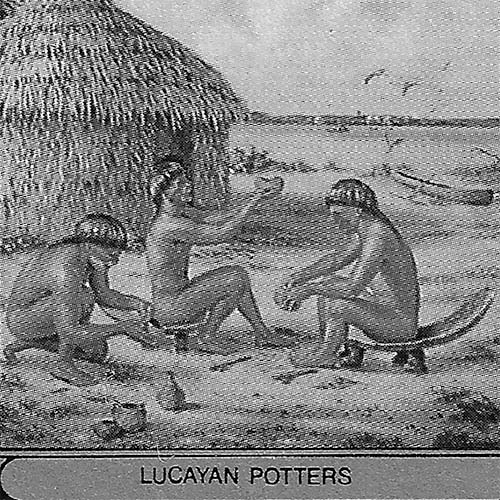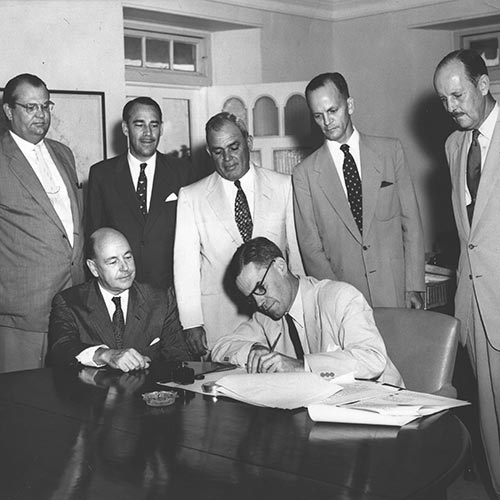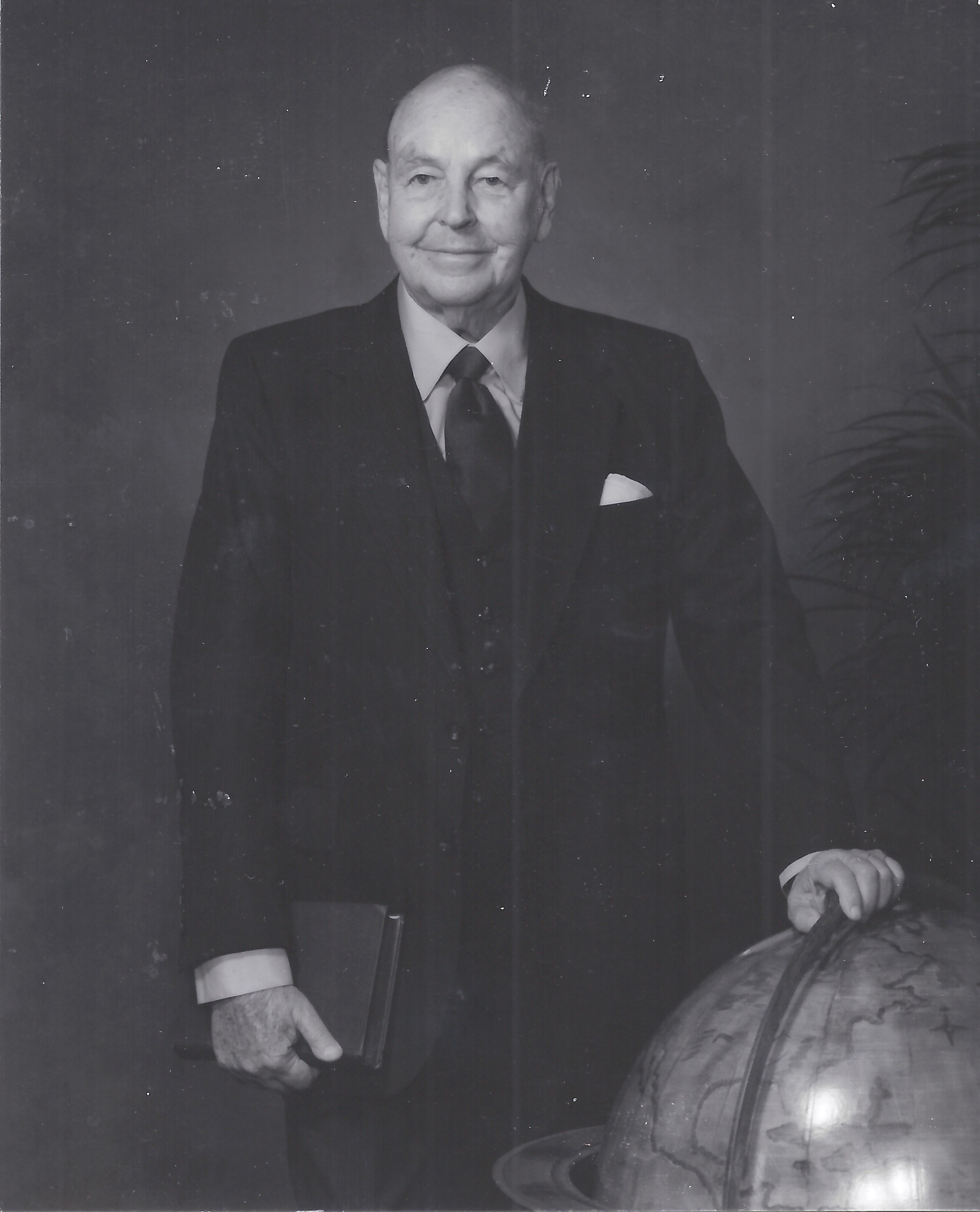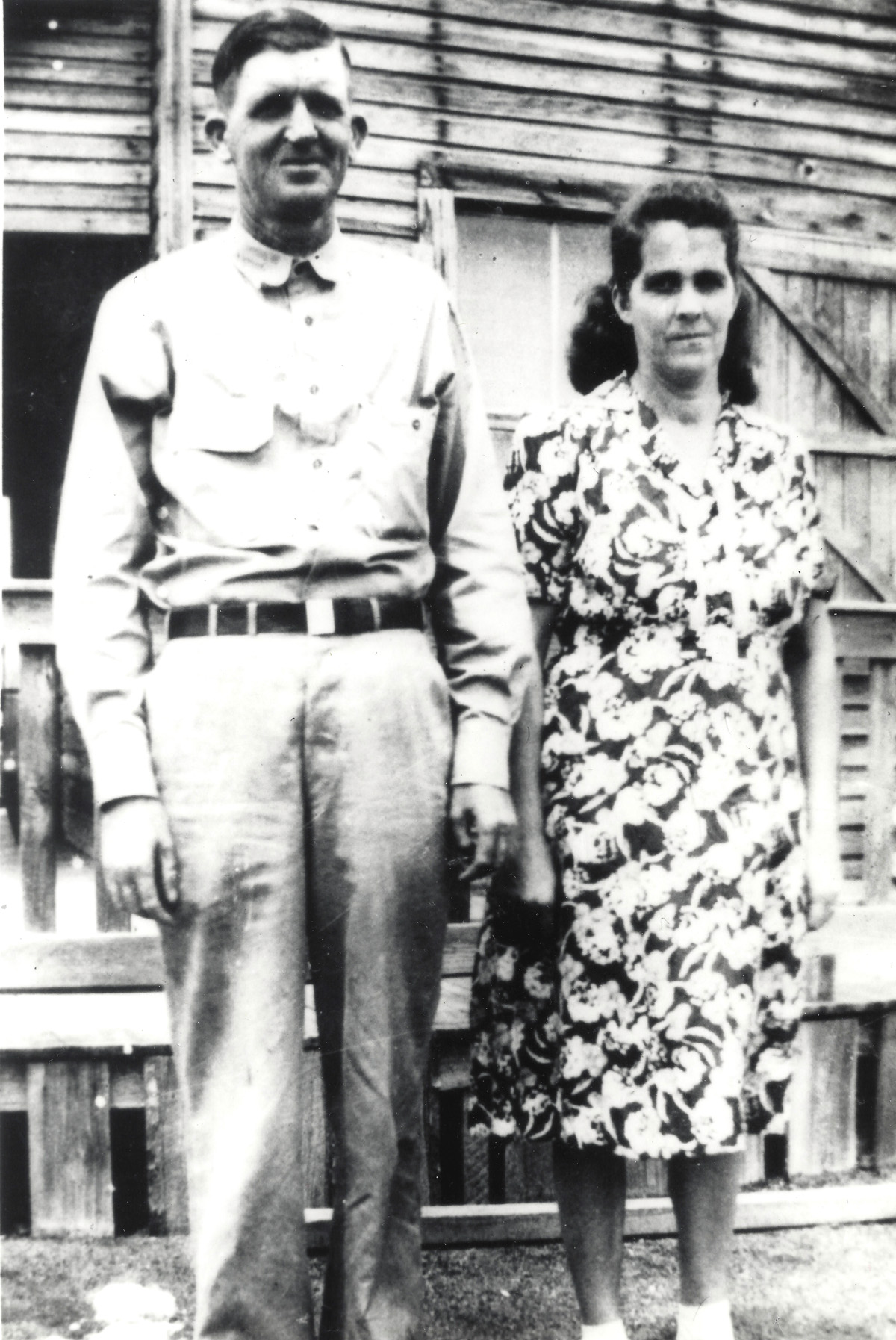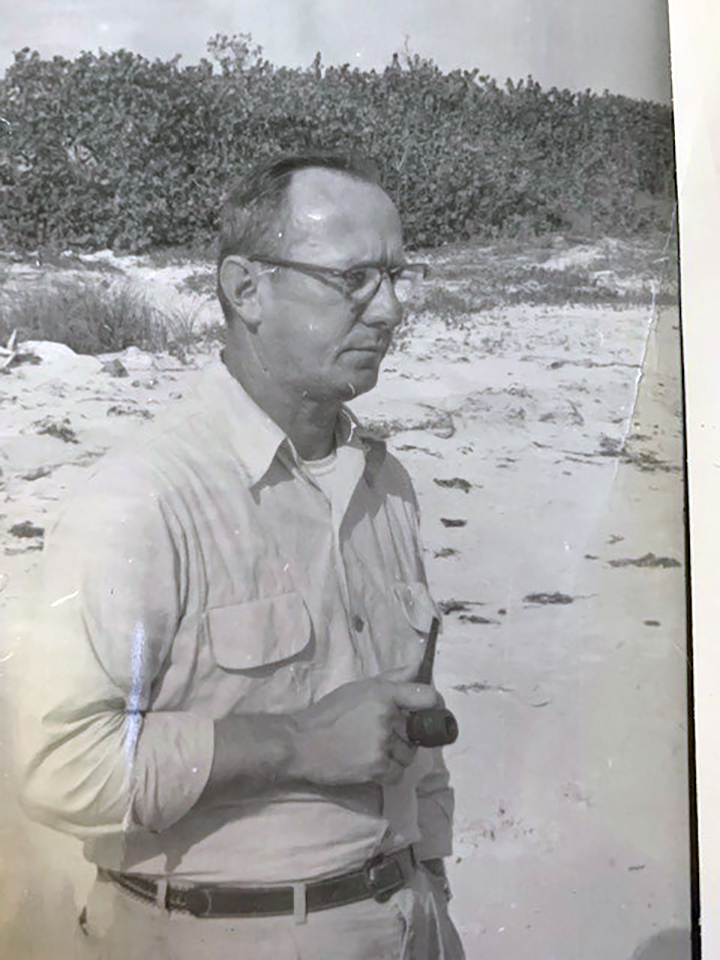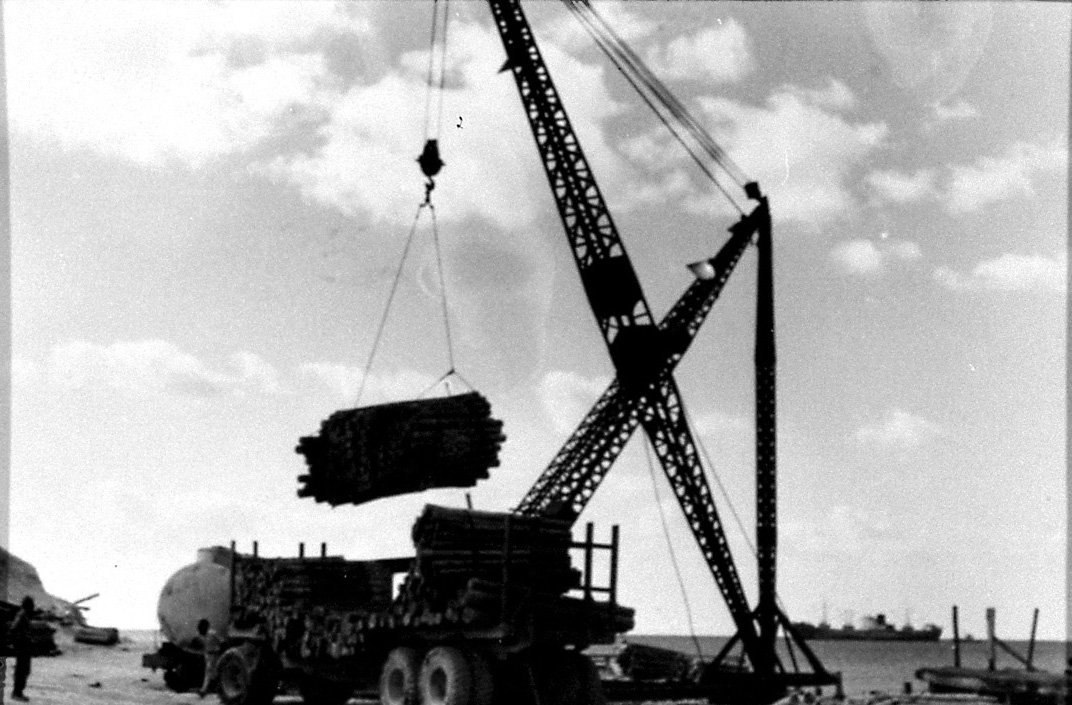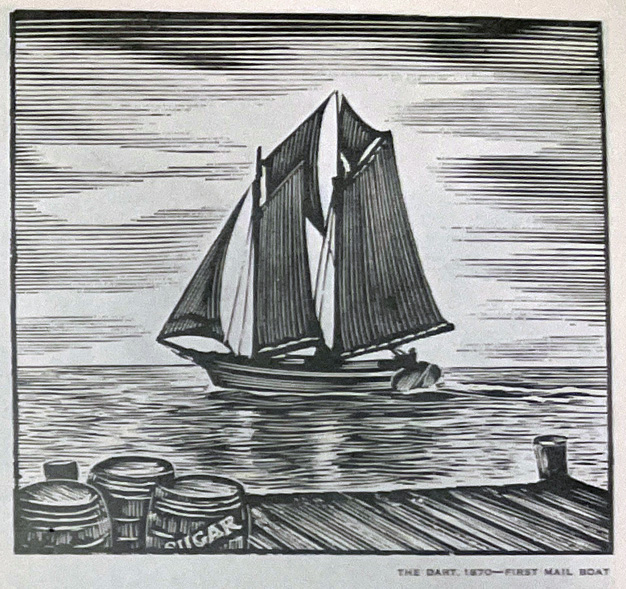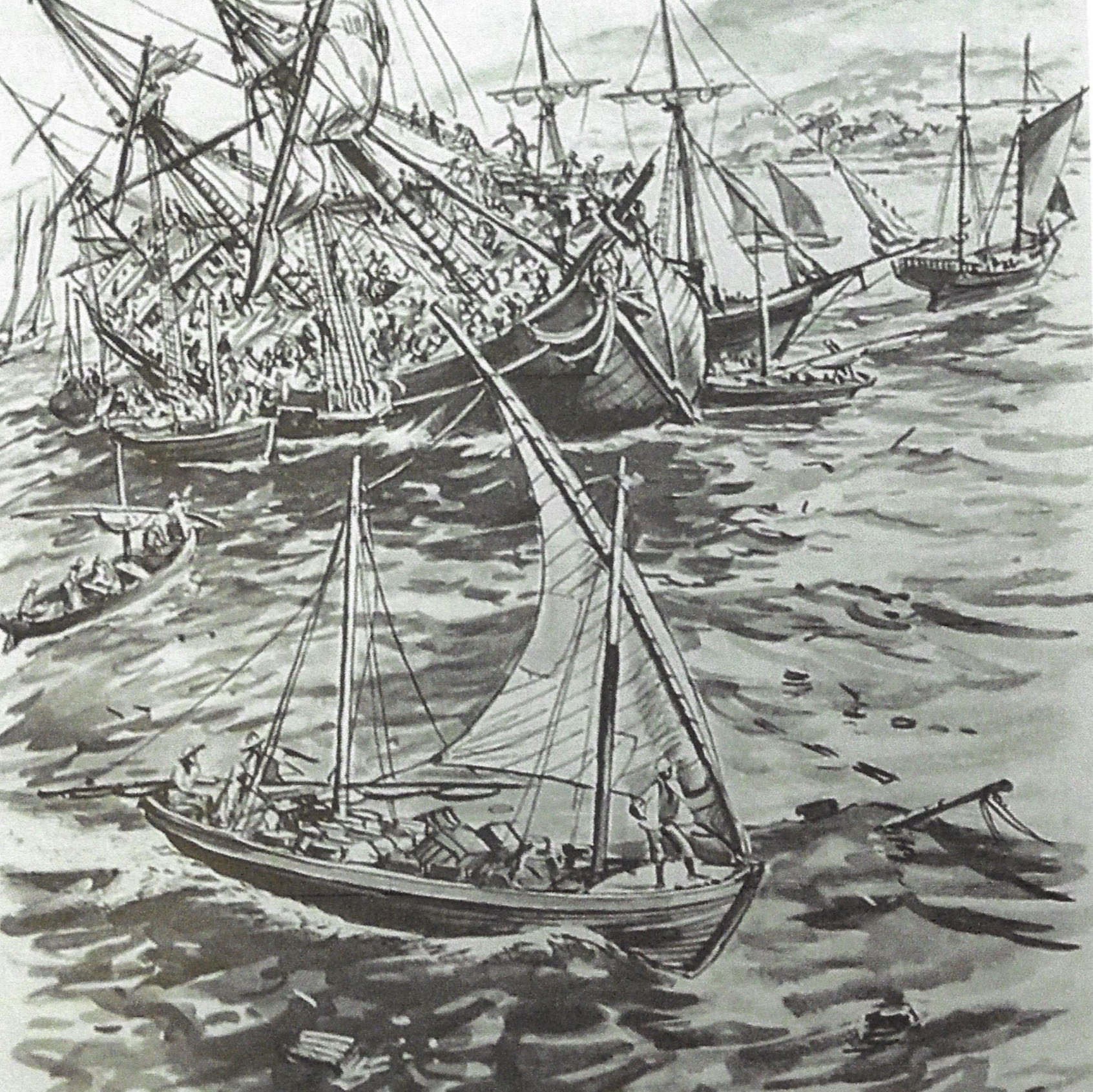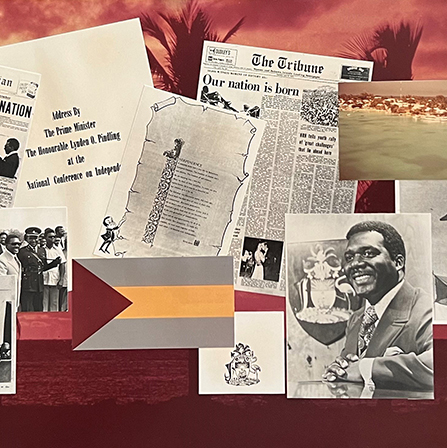History
Wallace Groves & Abaco Lumber
Wallace Groves described his first impression of Pine Ridge when he reluctantly visited at the urging of real estate magnate Harold Christie in an interview with Carl Livingston in 1980:
“We took off in an amphibious plane and landed in Hawksbill Creek, and someone met us in a dingy boat and took us to Pine Ridge. I remember a long day, looking over the business and at the end of the day I made, based on facts vividly, a firm offer which seemed very low at the time, of £50,000 for all of the stock of the Abaco Lumber Company … This enabled me to take the business over almost immediately. Pine Ridge was a typical small-time lumber town, built out of its own product, unpainted and somewhat depressive, with a narrow-gauge railroad – the only one ever in the Bahamas , which ran through the center of the town and was its focal point.”
Groves also took stock of the people he met that day, and he was generous in his praise of those he found to be proficient at their jobs:
“I came shortly after the [explosive] catastrophe, and I remember being very much impressed with Nurse – I believe her name was Major, who handled the situation as a heroine. Also on my visit I remember being especially impressed with the manager – a Bahamian, Grey Russell, who deserves credit for keeping the business alive under most difficult conditions.
Mr. Russell verbally gave me the lumber inventory and other information, and I made a check of the inventory records and found them completely accurate. Mr. Russell proved to be a most unusual man, completely dedicated to his work. Completely honest and truthful, and I believe he never told me or anyone an untruth. He was self-effacing and quiet, ultraconservative, shy-to-the-extreme person, but with great knowledge, loyalty, and everyone down to the lowest paid worker gave him such trust and respect that he never had any labor difficulties or unrest. One of the best things I did was to put him in charge of the operation, whereas previously he had little authority.”
As a teenager during the First World War, Groves had borrowed money from his father (an investment banker who died when Groves was about 15) to buy a local timber concession from which he supplied lumber for a neighboring army camp. He later followed his father into the investment business, acting as a representative “…of various financiers and traveled throughout the United States correcting the problems of failing or bankrupt businesses and reconstructing them into successful, profit-showing operations.”15
Wallace and Georgette Groves came to live in the Bahamas in 1944 on Little Whale Cay in the Berry island group, about a hundred miles south of Grand Bahama, which Harold Christie had sold to Groves a decade before. It was there that Christie convinced Groves to look into the Abaco Lumber Company.
“I will tell you how I became interested in Pine Ridge and the Abaco Lumber Company. In 1946 while residing in Little Whale Cay, Harold Christie – later Sir Harold – made such strong presentations that I visit Pine Ridge on Grand Bahama island and consider the purchasing of the Abaco Lumber Company, which was in such a serious financial position, that they were on the verge of bankruptcy, and unable to meet payrolls, due to a recent death of the owner, and the company fell into mismanagement. Finally, I consented reluctantly to visit Pine Ridge with Mr. Christie.”
Groves aimed at a hundred percent Bahamian workforce except for some Turks and Caicos islanders, some of whom who had been employed when the company was purchased, and 900 who were recruited later. Consequently, there were no labor problems at Pine Ridge.
Modernization Comes to the Settlement
Groves moved quickly to improve the company’s operation. He replaced older steam-powered equipment (except for the locomotives) with diesel machinery and added kiln drying. He essentially rebuilt Pine Ridge, as well.
“Improved houses and barracks were constructed to accommodate workers and their families, as well as a recreation hall, police station and jail, a restaurant, immigration office, general store and barber shop. A small church similar to the one the Groves had built on Little Whale Cay was erected, and children between the ages of seven and sixteen were encouraged to attend the newly formed school. A clinic was established, and a doctor, Ejnar Gottlieb, brought in to attend to the growing settlement’s medical needs.”16
Making Abaco Lumber a Paying Concern
The pine wood was quite dense and hard, and only the lowest and thickest part of the logs would yield sawn lumber. As Groves’ treasurer-auditor Leo Savola noted in his 1980 interview:
“You take a tree here that is about 8 in. in diameter. A tree here would be about 75 yrs. old whereas in Georgia or north Florida or Alabama a tree 8 in. in diameter would be about only twelve to fifteen years old.”
Then there was the difficulty in getting the logs to the sawmill, which had traditionally been addressed by using small portable sawmills (so-called “pecker mills”), bringing the mill to the log, as it were.
The pine was harvested by hacking trails through the thick understory brush, and setting up a central location. The Grand Bahama railroad tracks first extended a mile or so north to the North Shore dock at Swordfish Creek, then twelve and a half miles east to Mill #8, and later eight miles west to the Hawksbill Creek harbor.
Groves ran the lumber company until 1956, logging from Crow Well east of the present Eight Mile Rock High School to Spur Road #23, which is currently used as the access road to the Water Cay landing.17
Pit Props & Profitability
Pit props were timber posts used to shore up coal mines and varied in size from four to nine feet in length. Groves was able to land a contract with the British National Coal Board for thousands of pit props in 1951, and by 1953, the company was employing 1,880 people. Lumber rights were sold to the National Container Corporation (which made cardboard boxes) for four million dollars in 1954 for use as pulp. Groves retained the Abaco Lumber Company, which produced 9,384,034 feet of lumber, and over a million feet in pit props in 1955. The National Container Corporation was acquired by the Owens-Illinois Glass Company in 1956.
Sawn pine boards and beams up to a foot square and 30 feet long were exported to other islands in the Bahamas and the Caribbean, while the pit props shipped to Cardiff and Europe for use in English, German and Belgian coal mines. Groves was able to get government approval for the use of thinner trees for pit props, so the company revisited areas where smaller trees had been left behind for further harvest, thereby insuring the company’s profitability. The first pit prop shipment was made in February or March of 1952.
Finished lumber was originally taken to the North Shore dock and loaded onto barges by which it was sent to the port at West End. After a harbor at Hawksbill Creek was dredged, loads were transported there by rail.
Life at the Settlement
Before Wallace Groves took over, workers were paid in company tokens and script that could only be redeemed in the camp, but he quickly moved to have payment made in Bahamian currency.
A company store sold most everything needed, and the only other store was out at West End. The mailboat Richard Campbell brought mail and provisions, and provided transportation.
Workers were able to see movies at the missile base. As Savola recalled, Pine Ridge was “definitely the largest settlement because on the payroll there was about 1800 people at the peak of the payroll, and that wasn’t counting the children – about 300 kids going to school in that little school house at that time.” Christmas at Pine Ridge was described by Savola:
“Christmas was something quite special, particularly for the children in Pine Ridge, because the company always had a policy that they get a basket or bag, which always contained an apple or orange; there was a toy and trinket always varied for the boys and the girls and we always give it through the office. They had to come in the front door, bag then go out the back door. Of course, we had to police it very carefully or they would go through two and three times.”
By the time the Abaco Lumber Company was winding down, Wallace Groves’ plans were already aiming far higher, once the momentous Hawksbill Creek Agreement was signed on Aug. 5, 1955. A Freeport project had long been in Groves' mind and was now about to come to fruition.
Watch footage of early construction: Freeport, Grand Bahama Island, Bahamas - 1956-64
14 Actually there were others – see Darius D. Williams. The Rail & Locomotive History of the Bahamas. New Smyrna Beach, FL: White Sound Press, 2007. .
15 Jolene Prewit-Parker. A Dream Come True.
16 Jolene Prewit-Parker. A Dream Come True.
17 Darius D. Williams. The Rail & Locomotive History of the Bahamas. New Smyrna Beach, FL: White Sound Press, 2007, p. 19.
